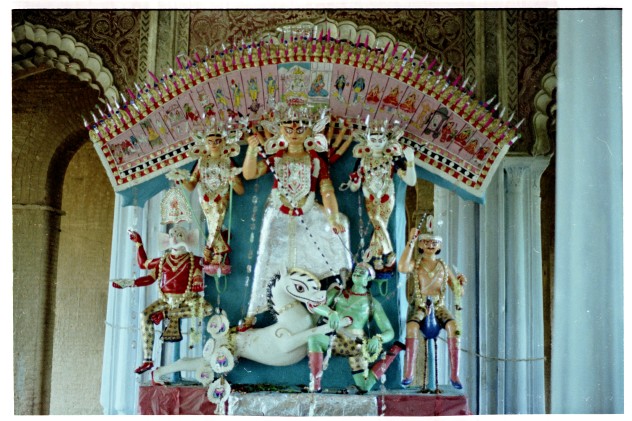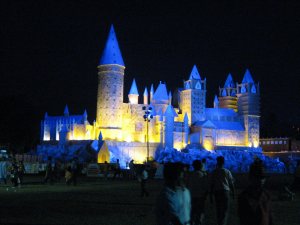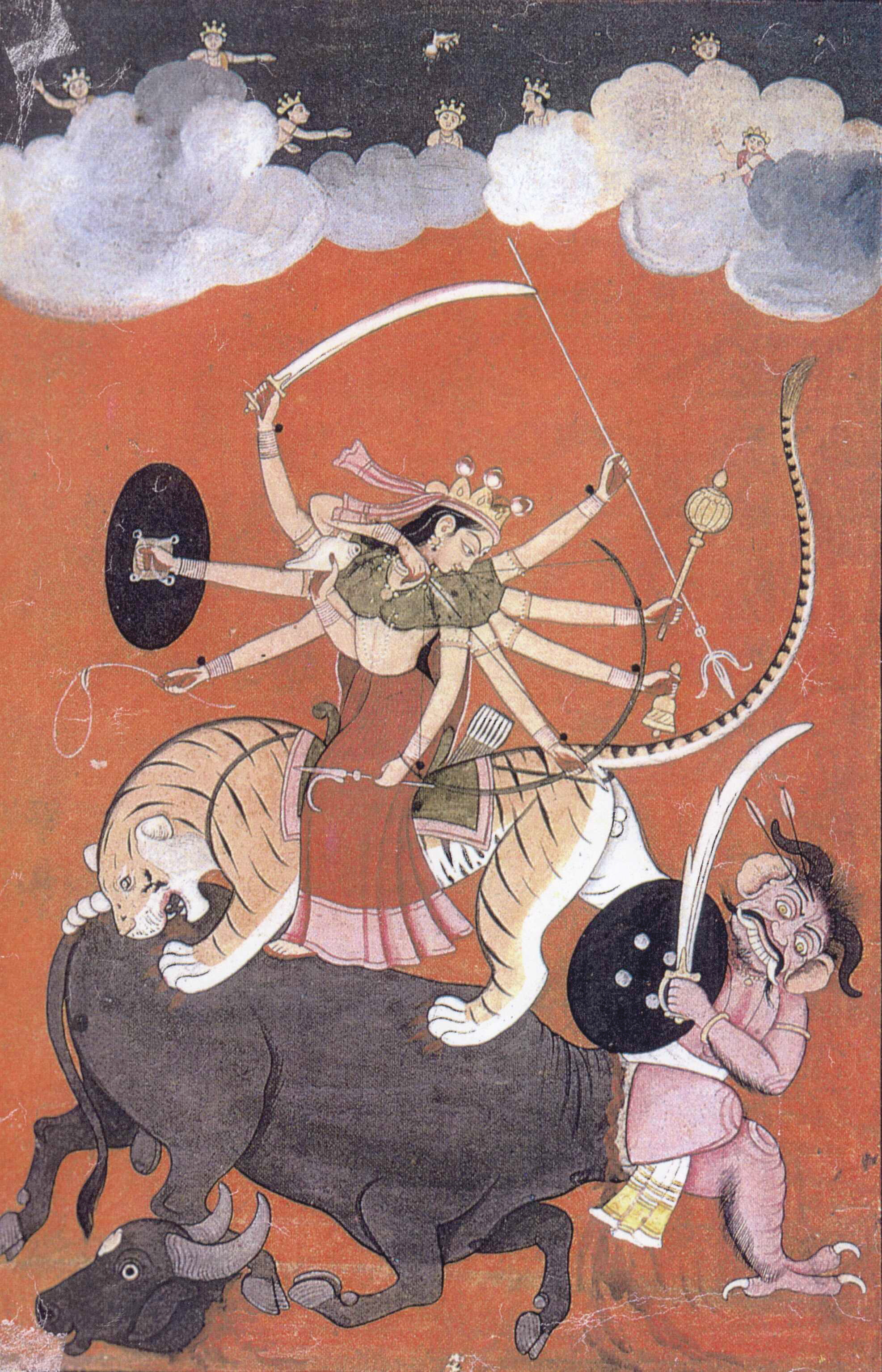October 5-6, 2011
Maha Navami
According to an 1815 French text…
“Maha-navami, known also under the name of Dasara, [is] specially dedicated to the memory of ancestors. This feast is considered to be so obligatory that it has become a proverb that anybody who has not the means of celebrating it should sell one of his children in order to do so.”
Okay—celebrants don’t actually sell off the kids to honor to celebrate, but the holiday is a big deal in India (especially Bengal) as well as parts of Nepal, Bhutan, and other countries with Bengal populations.
Also, Maha-navami isn’t the name of the whole celebration. Navami means ninth day, and refers to the ninth and penultimate day of the Durga Puja festival. It’s observed in different ways throughout the subcontinent.

Maha-navami falls right after Maha-ashtami (eighth day) and opens with Sandhi Puja, the ritual that recalls Durga’s defeat over Mahishasura’s two generals, Mundo and Chando.
Dashami
The following day, Dashami, is a sadder occasion, as worshippers of Durga try to postpone the inevitable.
Dashami is the day when Goddess Durga accompaning her children sets for Kailash, her husband’s abode. With a heavy heart the Bengalis immerse the clay idol of Durga in the sacred Ganges bidding her goodbye and earnestly waiting to see her again the next year…


